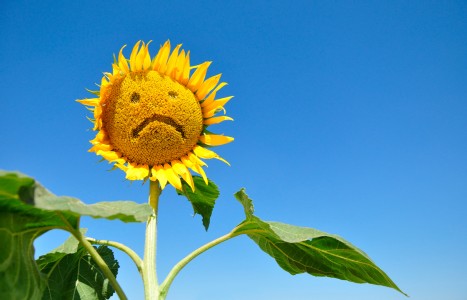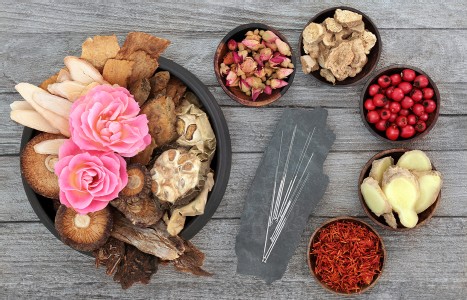Did any of you ever get the feeling in school that it simply was not OK to speak about wanting to be successful? To get into the nitty gritty details of how to make money in practice? Maybe you were even someone like me who was directly told by someone in a position of power that I needed to take what I could get because in private practice, I wouldn’t make money.
Spotlight on the AAOM
Gene Bruno is one of the acupuncture profession's most respected members. He began studying acupuncture and Oriental medicine at the Institute for Taoist Studies in Los Angeles, Calif., in 1970, and later received a bachelor's degree from UCLA. He was one of the leaders of a project that brought veterinary acupuncture to the United States in the mid-1970s, and helped to establish both the New England School of Acupuncture (the nation's first acupuncture institution) and the California Acupuncture College. He also participated in some of earliest acupuncture research performed in the country at Harvard Medical School.
In addition to his research efforts, Dr. Bruno has also been influential in having acupuncture recognized on a state level. He has been licensed to practice in Alaska, California, Oregon and Washington, and wrote the scope of practice laws for acupuncture and Oriental medicine in Washington and Oregon. He has also served on the acupuncture committees for the states of Oregon and Washington, and maintains a private practice in Salem, Oregon.
More recently, Dr. Bruno has served the AOM community as the president of the American Association of Oriental Medicine (AAOM), a position he has held since 2002. In this exclusive interview with Acupuncture Today, Dr. Bruno discusses several issues of importance to the profession, including the AAOM's efforts to keep the profession moving forward, licensing laws and scope of practice issues, and the FDA's recent ban on ephedra.
Acupuncture Today (AT): How did you first get involved with AAOM?
Gene Bruno (GB): I first began my studies in acupuncture and Oriental medicine in 1970, studying with the Institute for Taoist Studies. The chief instructor was Dr. Gim Shek Ju. During this time, I completed my pre-med major at UCLA and received a Bachelor's degree. In 1972, I continued my studies and work with the National Acupuncture Association, initially as a co-director of the Veterinary Research Project, which introduced veterinary acupuncture into the U.S., and later as a part of the Acupuncture Pain Research Clinic at UCLA Medical School. I was part of a team that brought Dr. James Tin Yau So to the U.S. in 1973, and then in 1974, established the first school in the U.S., in Boston, Massachusetts. As a staff acupuncturist at Harvard Medical School, and a research associate at Amherst University, I participated in some of the earliest research done in the U.S. on acupuncture.
After finishing my studies with Dr. So, and having completed nearly five years of full-time study with over 3,500 hours of clinical study in acupuncture and Oriental Medicine, I returned to Los Angeles, and continued in private practice. Dr. Steven Rosenblatt and I started another school in 1975 that became the California Acupuncture College.
In 1975, I took and passed the Oregon exam in acupuncture. In the fall of 1976, I moved to Oregon to practice. Since 1976, I have also been licensed in California, Washington and Alaska. I wrote the scope of practice law for acupuncture and Oriental medicine in Oregon and Washington, and served on the acupuncture committees for those states.
I have been a long-time member of the AAOM, but have spent most of my time working with issues that primarily concern the states of Oregon and Washington, so my association with the AAOM was very minimal until just the last few years. At the AAOM conference in Hawaii in 2001, I was nominated and elected as a director to the board. I was elected president in November 2002, and re-elected in November 2003.
AT: What are some of the challenges you face as the association's president?
GB: The biggest challenge seems to be budgeting my time. There are an incredible number of issues going on within our profession. Just keeping up to date on all the information, so I can help my board make decisions that affect our profession, is a task in itself. There is also a future to plan and a foundation to build for the organization itself. The directors of the AAOM all serve voluntarily. They all work very hard and spend much of their own resources in their efforts to promote the profession. We are also incredibly lucky to have found our attorney, Mark Thoman, who volunteers his time and resources unselfishly. He greatly values what our medicine offers the public, and he dedicates himself to the advancement of our profession.
Like all of the directors, I actually have a day job and a family. So as president of the AAOM, finding enough time to manage all the affairs of the association is a daunting task. For me, the work we do is stimulating and certainly challenging.
AT: In a recent poll, Acupuncture Today found that nearly two-thirds of the voters thought the state associations weren't doing a good enough job representing the profession's interests on the state level. How would you respond to that, and on a national level, how do you think the AAOM is doing in representing the acupuncture and Oriental medicine profession?
GB: Responding to the survey regarding the poll on state associations is not a simple task. The poll was not specific about the interests or the actual states involved. I'm sure you are aware that the poll's Web engine allows the same person to log on multiple times from the same computer. So, in that regard, it's not an objective poll.
Nevertheless, I will comment in a general way, assuming the poll has an element of validity to it. The challenges that acupuncture and Oriental medicine are facing at this time are as significant and threatening as they ever have been. The attempt by members of other professions to acquire the right to practice acupuncture with minimal, inadequate training has increased dramatically. The attraction to weekend "wonder workshops" and the willingness of certain states to allow these individuals to practice this form of acupuncture is a challenge for many states. The current climate that is threatening our use of herbs is resulting in legislation in many states that will affect our use and access to our herbal medicines.
I would suggest that the results of the poll may reflect a reaction to these and other serious issues that practitioners are worried about, and not necessarily a reflection of the job the state associations are doing. The independent people who have developed licensure in their own states have called together their colleagues and developed legislation that they thought was the best they could get in the situations they faced.
As the profession in each state matures and legislation evolves to embrace that maturity, I hope to see more interaction between the state and national organizations on a foundational level, as in bylaws, corporate structure, and basic freedom to practice. Then we hope to be able to work to enhance state organizational strength with communication links via the Internet and other forms of interaction. Through legislative initiatives, we can work together to help build scopes of practice and provide our profession with the ability to do the best we can possibly do for our patients.
I personally know of a number of state associations that the AAOM works with who have done an excellent job in dealing with the different challenges that face them. It doesn't mean that they have completed their work, but they have been, and are, doing everything they can to protect the integrity of our medicine, given the resources available to them.
With regard to the AAOM's efforts to represent the profession, there are actually three areas of involvement: international, federal and state. Internationally, we participate in the work the World Health Organization (WHO) does on acupuncture and Oriental medicine. We also work closely with the World Federation of Chinese Medicine Societies (WFCMS), which is associated with the WHO. AAOM Vice President Dave Molony is one of the vice presidents from North America on the WFCMS. The WFCMS has representatives in North and South America, England, Western and Eastern Europe, Asia and Australia.
Nationally, the AAOM is focused on expanding its influence and ability to protect licensed practitioners' right to practice and to protect the integrity of acupuncture and Oriental medicine in the U.S.
As AAOM president, I am part of the five-member planning committee for the Society of Integrative Oncology's 1st International Conference to be held this November. The AAOM is in direct contact with the Office of the Secretary of Health and Human Services. We have direct meetings with the lead counsel for the FDA. We were present and participated in all of the hearings held by the Institute of Medicine on complementary and alternative medicine. The AAOM is actively participating in ACAOM's Doctoral Task Force. We are also sponsoring and participating in groundbreaking research on herbs at the University of Tennessee. And the list goes on.
In our participation with all of these agencies and organizations, our primary goal is to promote excellence and integrity in the professional practice of acupuncture and Oriental medicine. Sometimes that is done by working with federal regulators and educating them about our medicine. Sometimes is means working to develop and maintain standards of ethics or education. Regularly it also means communicating the information we gather to our members, through The American Acupuncturist, list servers, and publications like Acupuncture Today.
Certainly everything the AAOM does is limited at times by our funds. Although the AAOM directors and the members of our committees are volunteers, many of our projects are not inexpensive to fund. At times this can limit our activity, but it doesn't prevent us from persisting in our efforts to represent the interests of the profession.
Finally, at the state level, the AAOM works closely with member state associations and non-member states to assist them when they ask for our help. On a weekly basis, states request our assistance with the different challenges they face.
So the short answer to your question is that I feel the AAOM is doing a good job and working harder than ever in the most ethical and professional ways to be the national spokesperson for our profession, to protect the rights of practitioners, to promote education and research, and to protect the public trust.
Editor's note: Part two of Acupuncture Today's interview with Dr. Bruno will appear in the July issue.


